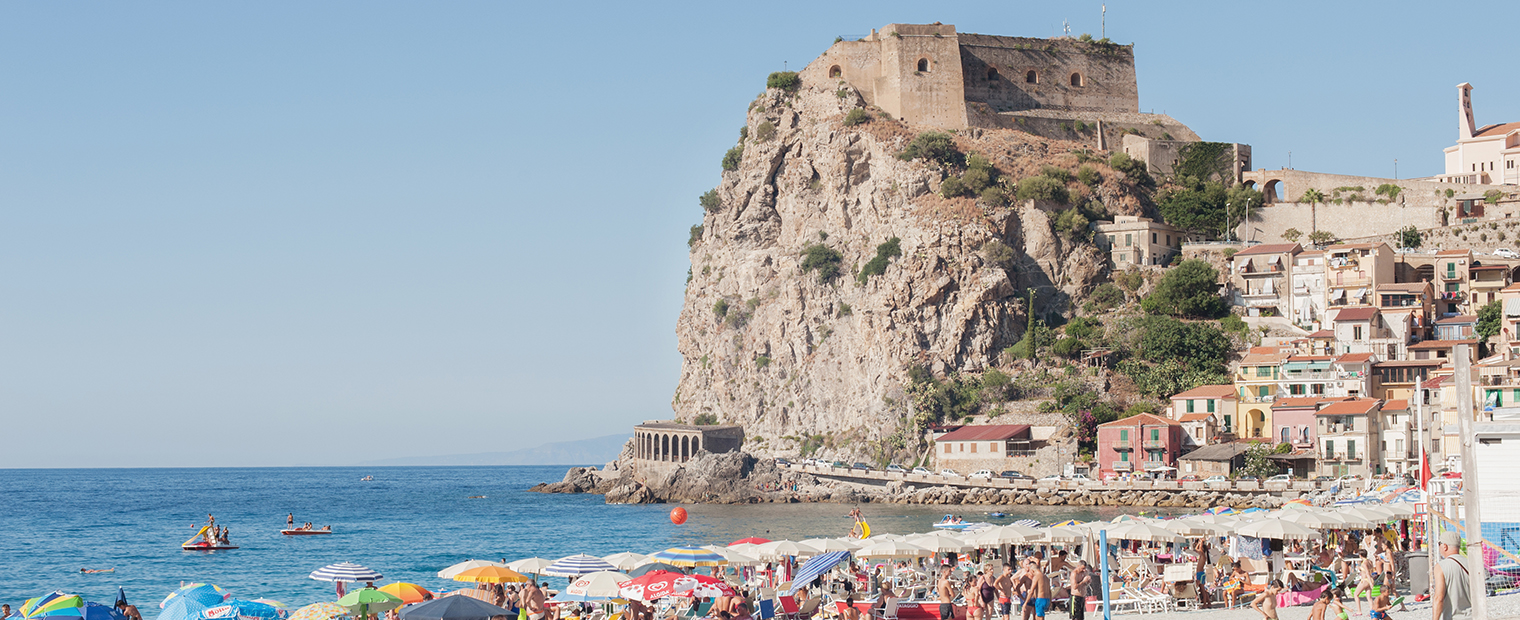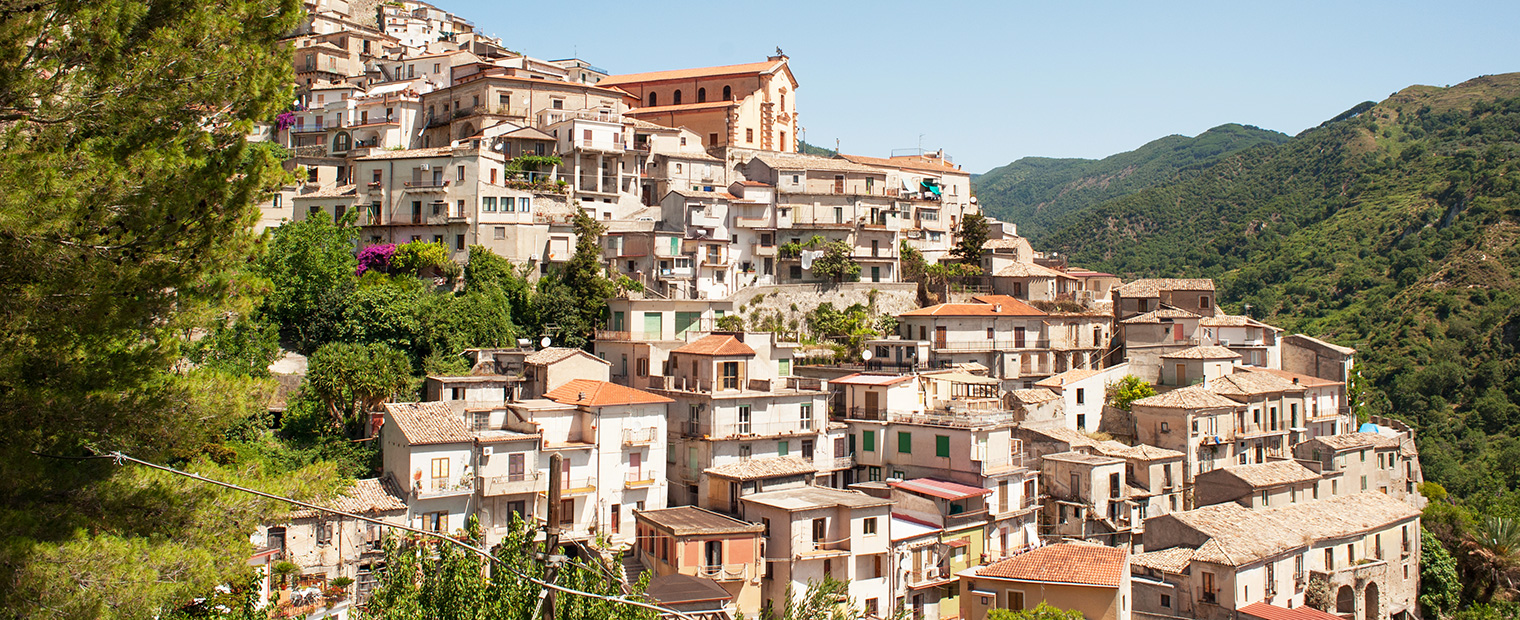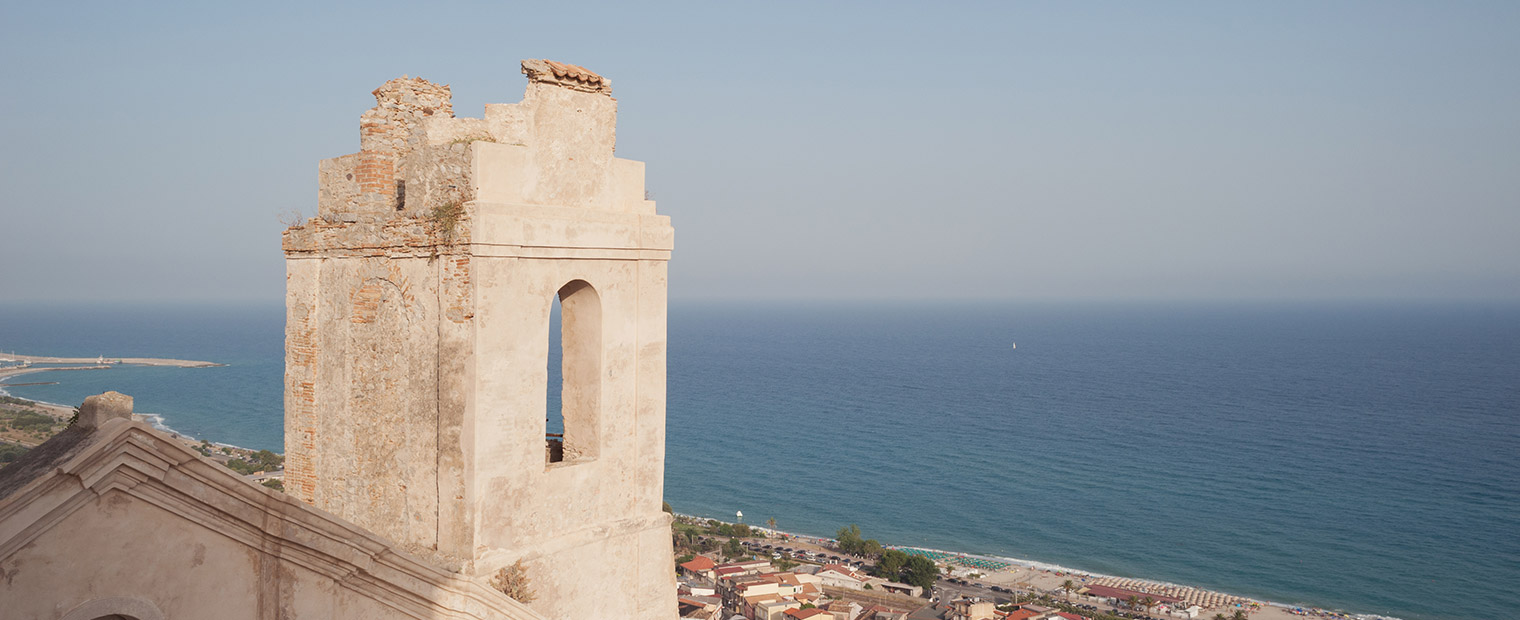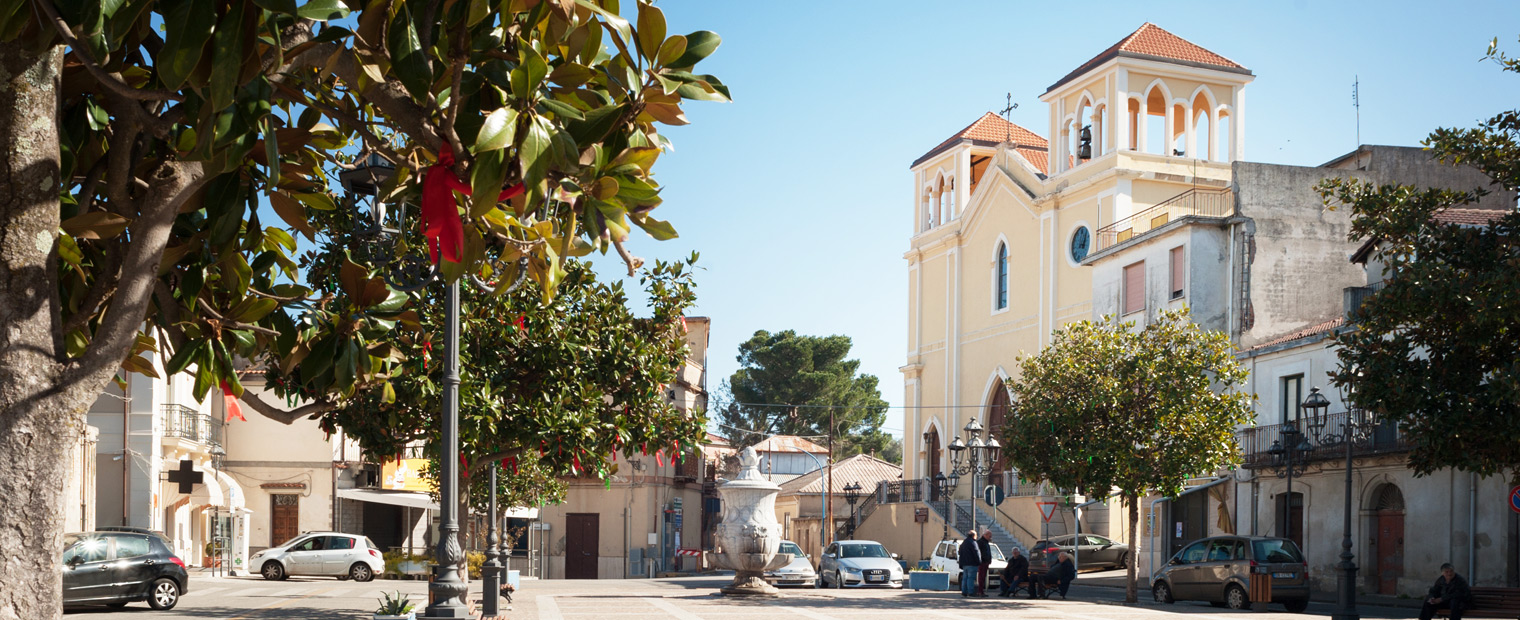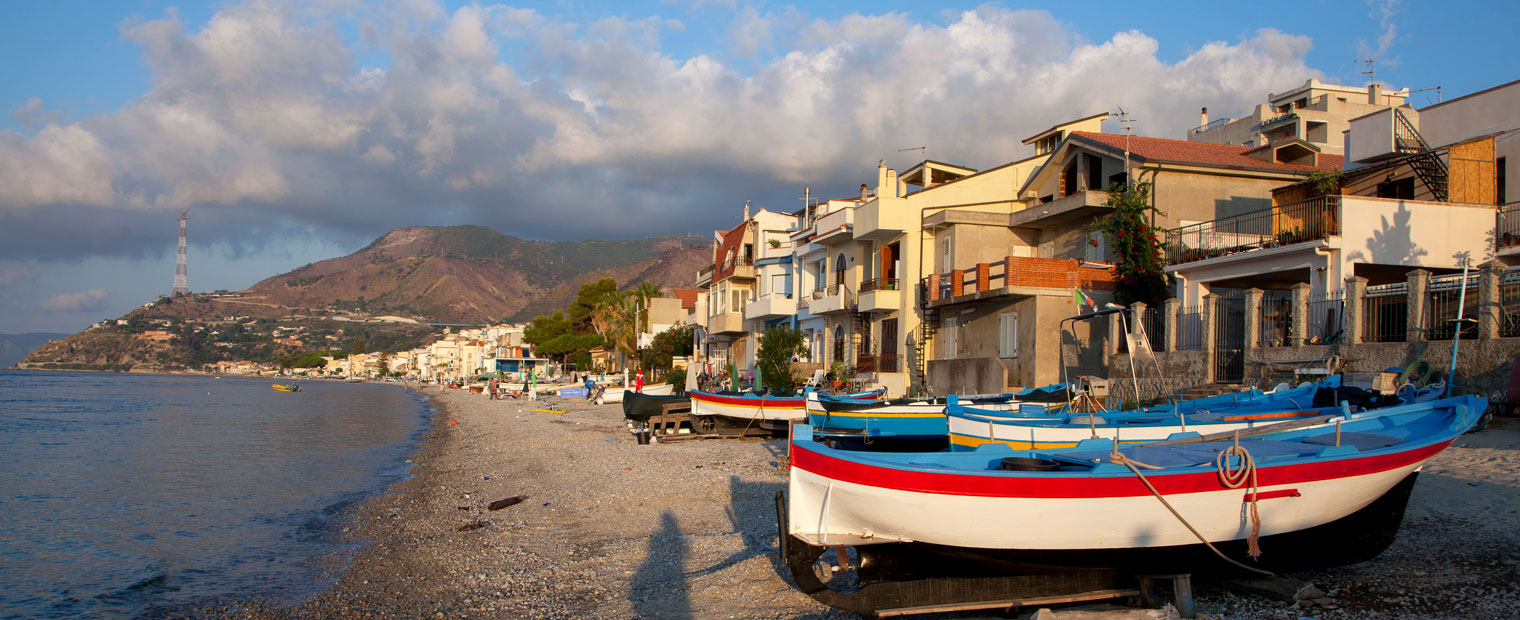The Metropolitan Area of Reggio Calabria, set between the two coastal fronts of the lower Ionian Sea on side, and the Tyrrhenian Sea on the other, has 97 municipalities: villages of great interest for both their historical and architectural features, and the wonderful landscapes that characterise them. It is an area at the centre of the Mediterranean whose history, not surprisingly, is strongly influenced by the different cultures of the people who have passed through here. In the heart of the metropolitan area of Reggio Calabria, between the approximately 220 kilometres of coastline that extends from Rosarno to Punta Stilo (Monasterace), lies the imposing Aspromonte massif that almost seems to retain the three main sides: the eastern Ionian south characterised by low coasts, and the southwestern and northwestern Tyrrhenian Sea, characterised by high frontal coasts. The territory, which hosts about 30% of the regional population with just under 60,000 inhabitants, presents profound contrasts to the landscape: sea and mountains together, key factors of the territory around which history, culture, and traditions are intertwined. Particularly rich is the naturalistic context that boasts a great variety of ecosystems and typical Mediterranean landscapes. It is a heritage that boasts examples such as the Costa Viola, the Riviera dei gelsomini, the Valley of Torbido, and the Valley of the Stilaro. On the Tyrrhenian side, the Piana di Gioia Tauro, is known for its port that ranks among the first places in the Mediterranean and in Italy for traffic intensity. The Ionian side responds with Locride, a typically rural area where traditional crops flourish and the Grecanica area (or Bovesia), located in the heart of the Amendolea valley. It is place with ancient roots in which some towns (specifically Bova, Gallicianò, Roghudi, and Roccaforte del Greco) pass on and still protect the use and knowledge of the Greek language.
The charm of Grotteria
The birth of Grotteria is represented by a temple dedicated to the goddess Minerva. It dates back between the 8th and 9th centuries BC and is called Eruma Atenaies. After the occupation by the Locri people, the centre was influenced by various populations and changed its name. It is with the emperor [...]
The rock of Jazz
Overlooking a gentle curve on the Costa dei Gelsomini, Roccella Ionica is mirrored on a band of the Ionian so clean and crystalline clear that it has won several blue flags and other important environmental awards.
Surrounded by a beach of fine white sand and rolling green hills, the town has anc [...]
Varapodio: the militaris podium of Valle del Marro
Originally founded on the “Salvatore” hill on which the river of Marro descends, the ancient Varapodio was moved to its current site after the 1600s, while maintaining its significant strategic-military position. In fact, from above, it was possible to see and organise the defences of the entire Pla [...]
Villa San Giovanni: the door to Calabria
Villa San Giovanni, the mythical door of Calabria, which has always been at the centre of Mediterranean traffic due to its position on the front line Strait of Messina. The town rises in a point on the Calabrian coast so close to that of Siciliy that is the scene of continuous sport crossings, with [...]
